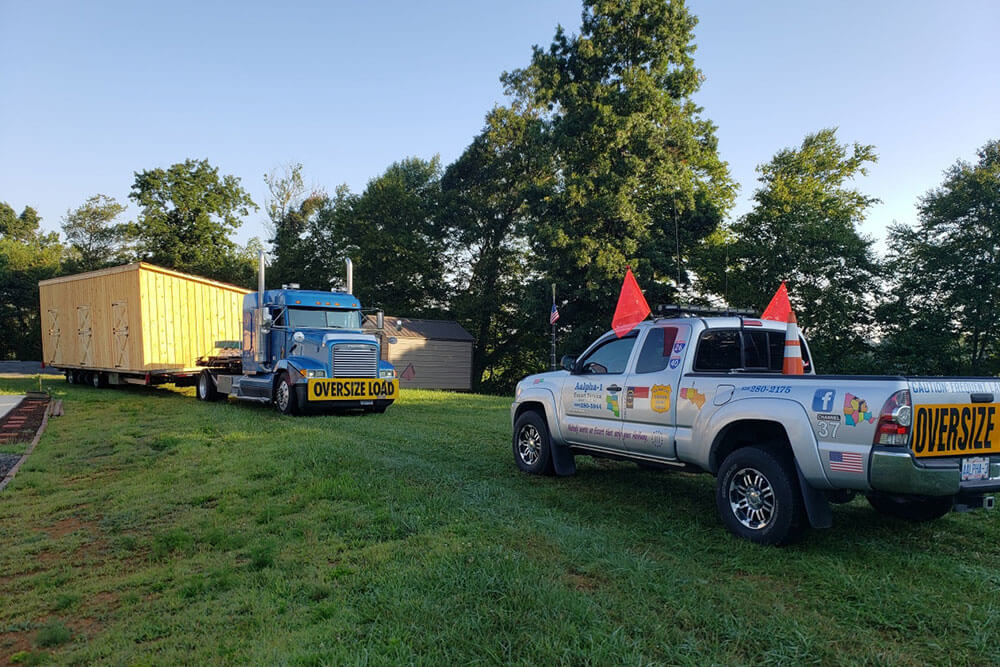In the United States and Canada, transporting oversize loads comes with its own set of challenges. Ensuring compliance with regulations is crucial to not only avoid hefty fines but also to prioritize safety on the roads. However, road conditions can change rapidly, making it even more challenging to transport oversize loads while staying compliant. In this article, we will discuss how you can navigate these challenges effectively to stay compliant with oversize load rules as road conditions change.
Understanding Oversize Load Regulations
Before delving into how to stay compliant with oversize load rules amidst changing road conditions, it’s essential to have a clear understanding of the regulations governing oversize load transportation in the United States and Canada. These regulations typically cover aspects such as maximum allowable dimensions, required permits, flagging and signage requirements, and escort vehicle mandates.
Tips for Staying Compliant
1. Stay Informed
Stay up to date with the latest regulations concerning oversize load transportation in the regions where you operate. Regulations can vary not only between the United States and Canada but also between different states and provinces. Regularly check for any updates or changes to ensure compliance.
2. Plan Ahead
Effective planning is key to staying compliant with oversize load rules, especially when road conditions are prone to change. Plan your route in advance, taking into account any potential road closures, construction zones, or weather-related challenges. Having alternative routes mapped out can help you navigate unexpected road condition changes without compromising compliance.
3. Use Technology
Make use of technology to aid you in staying compliant with oversize load rules. There are various route planning and oversize load management software available that can help you calculate the best and most compliant route based on real-time data. Utilizing GPS systems designed for oversize loads can also provide valuable insights into road conditions ahead.
4. Regular Maintenance Checks
Ensure that your vehicles and equipment undergo regular maintenance checks to reduce the risk of breakdowns or malfunctions that could lead to non-compliance. Checking tire pressure, brakes, lights, and other essential components before each trip can help prevent compliance issues on the road.
Best Practices for Adapting to Changing Road Conditions
1. Monitor Weather Conditions
Keep a close eye on weather forecasts along your route to anticipate any potential road condition changes due to inclement weather. Snow, ice, heavy rain, or strong winds can significantly impact road conditions and require adjustments to your travel plans to maintain compliance with oversize load rules.
2. Stay Connected
Maintain open communication channels with your drivers and escort vehicle operators to receive real-time updates on road conditions. Encourage them to report any changes promptly so that you can make informed decisions to ensure compliance and safety throughout the journey.
3. Be Flexible
Flexibility is crucial when road conditions change unexpectedly. Be prepared to adjust your route, schedule, or even temporary halt transportation if the safety or compliance of your oversize load is at risk. Prioritize safety above all else to avoid potential violations or accidents.
Final Thoughts
Staying compliant with oversize load rules as road conditions change requires a proactive approach, thorough planning, and constant vigilance. By staying informed, planning ahead, utilizing technology, conducting regular maintenance checks, monitoring weather conditions, staying connected, and being flexible, you can navigate the complexities of oversize load transportation successfully while prioritizing safety and compliance. Remember, compliance is not optional – it’s a legal and moral obligation that ensures the well-being of everyone on the road.

